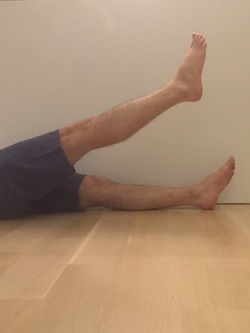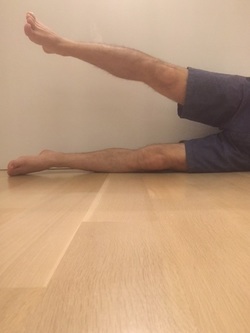|
Also known as patellofemoral syndrome, anterior knee pain can be extremely frustrating for patients and surgeons alike. Anterior knee pain is extremely common and can have a variety of causes. Patellofemoral arthritis (knee-cap arthritis), and knee-cap dislocation (patellofemoral instability) are two diagnoses that can cause anterior knee pain, but they each will require a separate blog posting of their own. Patients experiencing patellofemoral syndrome complain of aching pain in the front of the knee which can range in severity from mild to intense. It is often made worse by sitting with the knee bent for a prolonged period (movie theater or back seat of car). In this situation the pain can be improved by extending the knee (straightening it). Climbing or descending stairs can also be quite irritating. This condition affects people of all ages and of all fitness and activity levels. I have diagnosed and treated this condition in marathon runners, adolescents, and patients who previously underwent total knee replacement. Usually the problem gradually worsened and has been present for a fairly long time when it gets to me. The key to the diagnosis is to listen to the patient. The history given tends to be very consistent. To better understand this condition, let's start with some background information. The patella (knee-cap) is subjected to the greatest force of any cartilage in the body (3-5 times body weight during normal activity and up to 10 times body weight when jumping). It is embedded within the extensor mechanism of the knee so that it can provide leverage to the quadriceps muscle group. The front of the knee is richly innervated and is thus very sensitive to abnormal pressures. The position of the femur (thigh bone) during activity will change the amount and distribution of forces on the patella. There is a very consistent examination finding associated with this diagnosis. Patients usually will have very weak hip flexors (muscles than bring the thigh forward relative to the torso) and hip abductors (muscles that bring the thigh away from the midline). Usually the hip external rotators will also be affected. What does the hip have to do with the knee-cap? The hip flexors and abductors are very important during the gait cycle (walking). The abductors must contract with great force to keep the pelvis level during single leg stance. The hip muscles together act as the "foundation" for your leg. If they are weak, your leg will be poorly controlled when walking. This can result in abnormal gait mechanics, abnormal rotation of the femur when weight bearing, and abnormal patellofemoral mechanics. This combination of issues multiplied over thousands of steps each day can result in anterior knee pain. Ok, so how do we fix it? My recommendation is to focus on the hip. Strengthening the weak hip muscles will almost always result in a cure. Unfortunately, this can sometimes takes weeks or months. Remember, we are rebuilding muscles that have gotten deconditioned over a long period of time. This takes time. Knee pain gradually resolves as hip strength gradually improves. The exercises I recommend are very simple:  Straight leg raise. Straight leg raise. Keep your knee locked in extension. Raise your leg from your hip keeping your toes pointing toward ceiling. Up and down counts as one repetition. Aim for a set of 30 repetitions. Then add sets. It is important to do these exercises on both sides, even if only one knee hurts. You want to keep things balanced.
 Lateral raise. Lateral raise. Lateral raise. This exercise focuses on the hip abductor muscles. Lying on your side, slowly elevate the leg from your hip, keeping your knee straight and your toes pointing forward (not toward the ceiling). You should feel the burn on the side of your butt.
So, that's basically it. Remember, we are building hip muscles. It takes time. I recommend doing these exercises on both sides (even if only one knee is painful) so everything stays balanced. Each repetition should be done slowly when raising and lowering. You may be surprised by how challenging this set of hip exercises can be. You should work up to 3 sets of 30 repetitions for each muscle group. Repeat the workout twice per week. The total work-out should only take about 15 minutes. Resist the urge to do these exercises more frequently. The purpose of exercise is to stimulate the muscle to grow. It then needs to be allowed to grow, and this takes time. Stimulating the muscles with resistance exercise too frequently will be counter-productive.
When doing this exercise becomes easy, feel free to add some additional resistance. You can wear a boot, or use an ankle weight. It is a common misconception that one should exercise the quadriceps using a leg extension machine. This is a mistake and I would strongly suggest avoiding any knee isolation exercises in general, but when dealing with patellofemoral syndrome in particular. The knee extension machine will worsen anterior knee pain. Be patient, and consistent with these exercises. As your hip strength improves, your knee pain will improve as well.
7 Comments
|
Dr. GorczynskiOrthopedic Surgeon focused on the entire patient, not just a single joint. Categories
All
|

 RSS Feed
RSS Feed